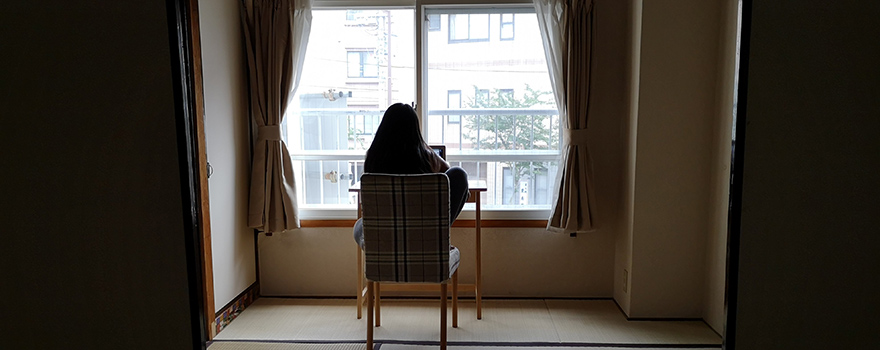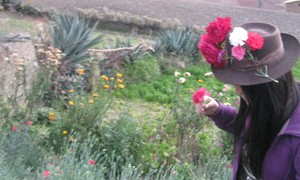“…not till we are completely lost, or turned round – for a man needs only to be turned round once with his eyes shut in this world to be lost – do we appreciate the vastness and strangeness of nature. Every man has to learn the points of compass again as often as be awakes, whether from sleep or any abstraction. Not till we are lost, in other words not till we have lost the world, do we begin to find ourselves, and realize where we are and the infinite extent of our relations.” – Henry David Thoreau, Walden



I had the opportunity to visit a farm deep in the Andes around an hour’s walk away from the closest town and almost five hours away from Huancayo by car. I’ve found that rural areas always have a certain beauty about them and the view from where their farm sits almost seems like the majestical land around Machu Picchu.
These days, the Peruvian news is all about Ciro Castillo Rojo. After more than 200 days of being lost in the Colca Canyon in Arequipa, Peru, they have found his lifeless body intact at the bottom of a cliff, 1400 meters below a viewing point in the tourist area. They recognized him by his clothes, pink watch, and gold necklace as seen in the last photos we had of him. It took 65 people 30 hours to get his body out of there and to a nearby town.
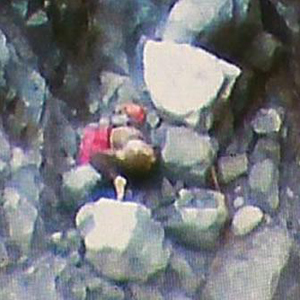
- Did his girlfriend, Rosario Ponce López, who was with him before his disappearance, have anything to do with his death? Classmates at their university have apparently stated that she has a tendency to be violent.
- Could the police or local town citizens be involved in his death? Ciro’s mother expresses doubt that Ciro could have fallen because he was found with no jacket and no shoes, but his hat was still on him. Furthermore, only his right arm seemed to be fractured.
- Did someone put him there after his death? He was found in the “backpacking zone” where the rescue team had thoroughly searched various times. Mountain rescue workers predict he died up to two days after breaking his arm (link in Spanish).
- Why are Rosario’s parents in Arequipa? Rosario’s parents admit that they are there to “protect the interests of their daughter” (link in Spanish), but it’s unclear what they mean by that. Even Rosario herself didn’t go to Arequipa for Ciro’s wake.
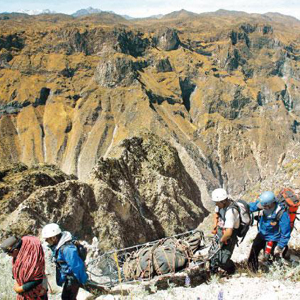
Only time and an autopsy will reveal the cause of death and bring another onslaught of emotions.
What have you recently lost and found? How did it make you feel?
Last Friday, we were ready to leave for a short trip to Trujillo to start apartment hunting on the Peruvian coast. We woke up to news that day about avalanches blocking the central highway. The highway would be closed for five days and bus prices shot up from $3 to $30 per passenger as private cars offered to take people to Lima via detours and backroutes. I thought about all the people who would miss their flights, meetings, dates and precious time with their families.
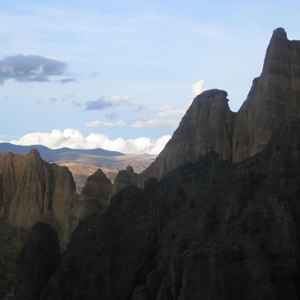
On one overnight bus ride from Lima to Huancayo, we had chosen one of the more reputable bus companies to make sure we’d arrive safe and sound. Three hours from Lima, halfway to Huancayo, in the middle of nowhere in the Andes with no town in sight, there was a rebellion. I woke up groggily to realize that people were complaining about the bus stopping every half hour. It would stop for fifteen minutes each time. Someone explained that the motor was overheating and it was necessary for them to stop every half hour to splash it with water.
It was going to take forever to get to Huancayo. People shouted that they needed to arrive in time for work, that the bus should have called for backup as soon as they knew about the problem. We were locked in and passengers started banging on the windows, demanding to be let out.
When the driver finally unlocked the bus door, we all scrambled out to find that it was pitch dark outside and no one knew what to do but yell at the bus staff. We were lucky enough to flag down another bus on its way to Huancayo. They only took five of us and we had to sit on the floor in a little hallway behind the drivers. I arrived in Huancayo five hours later, freezing and with a major headache but thankful that we made it.
That’s what happens when things always go wrong — you remember to be grateful.
What went “wrong” this week and how can you turn that mishap into something to be grateful for?
This week we’re celebrating Huancayo’s 439th birthday and the festivities started off with a fashion show in the main plaza, displaying and commemorating typical Huanca attire and regional costumes of the Andes.
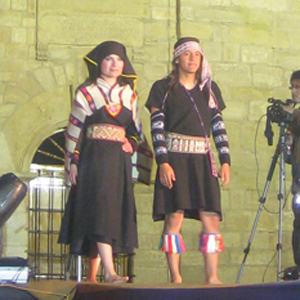
How are gifts important to your relationships with loved ones, if they are at all? Do you make a point to give meaningful gifts? Why or why not?
In early April, a young couple in their twenties disappeared in the Colca Canyon in Arequipa, Peru. On April 13th, they found Rosario Ponce López severely dehydrated. She had been eating insects and drinking her own urine to survive. They are still searching for her boyfriend, Ciro Castillo Rojo, to this day.
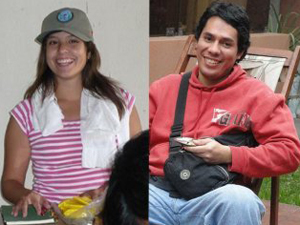
- She said that her cell phone lost its signal and ran out of battery during the days they were lost, but a mutual friend of the couple confirmed that he received phone calls and text messages from her mobile.
- One of the cryptic text messages that she sent to the friend said: “Hurry, they haven’t found me yet.” She spoke only of herself and not of Ciro.
- Rosario first told reporters that she and Ciro had walked off in different directions. Later, she changed her story, claiming that she was in a state of shock and didn’t know what she was saying. She now stands by the tale that Ciro went off to find help, but she couldn’t go with him because she felt really weak. When she woke up, he had disappeared.
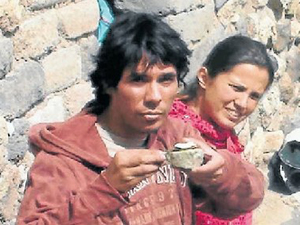
The President of the Committee of Attorney Generals in Arequipa says that Rosario has really important information for this case (link in Spanish), implying that she may not be sharing what she knows. Reinaldo Dos Santos, “The Prophet of America”, said in an interview a couple weeks ago that, “she’s trying to collaborate and she’s doing all that she can, but there are also things she’s not saying because of fear.”
When humans are deathly afraid of certain consequences, they react in different ways. In reflecting on my past, I handle similar situations by becoming painstakingly organized. I meticulously plan how I’ll manage all conceivable outcomes to the point of insomnia and losing my appetite.
How do you handle extreme fear? How have you seen people close to you handle extreme fear?
When it comes to corporal punishment in the Central Andes of Peru, domestic abuse is still typical and it wasn’t too long ago that there were more extreme measures at schools. Parents wrap broken egg shells on the child’s hand with wool dipped in brandy, and then light it on fire. The alcohol produces a quick flame and the egg shells burn against the skin. Some claim that its purpose is to scare a child from robbing and that the flame is blown out or disappears as soon as it appears. Others show their scars from the burns.
Using a belt is also a typical way of punishing children. If one child is the culprit, all children are thrashed in the name of the Father, the Son and the Holy Spirit. It’s believed that all children deserve the same punishment and should learn the same lessons. Beating children is somewhat of a ritual on the Thursday and Friday of Easter. It symbolizes a holy sacrifice as they share the pain and suffering of Jesus on the cross.
At schools, children who arrived late were forced to kneel on beer bottle caps in front of the whole class. It left scars on their knees. Children who had a difficult time understanding a concept in class had their heads banged against the wall. Children who misbehaved were hit by a pointer stick, sometimes until the stick broke in half. These days, children are no longer abused in the classroom, but they are still punished if they arrive late — they get hosed with water and spend the rest of the day dripping wet.
This is apparently not so bad because it’s reminiscent of the entire month of February when the whole country “celebrates” Carnaval. In Huancayo, this celebration entails gangs of boys throwing water balloons or buckets of water at random girls. You have to watch out because people can even attack from their apartments or dunk you in the plaza fountains. I have already seen three ladies get soaked and I’m not prepared to be the next one!
My parents, being the best-est parents in the world, came to visit me for my birthday. It was a tight 3 days they were going to be here and as much as I wanted things to go perfectly, things never seem to go as planned in Huancayo. (As a side note, I have decided that I will always plan future vacations for more than 2 weeks). Not only did things not go as planned, but during the few days they were here, my parents and I experienced a series of firsts.
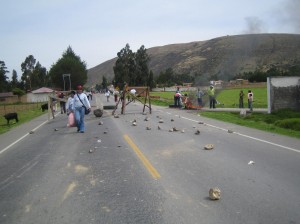
I had planned Sunday to be as Huancaino as possible, which is what my parents wanted – first, the patriotic flag ceremony in the main plaza and the parade that follows, led by the military’s band. I’ve seen at least part of the parade almost every Sunday because I love that community feel when all the families come out, kids running around, buying paper hats and ice cream. So, my parents and I are out there, ready and on time to see the whole thing, but the flags are already up, no ceremony. Turns out, it was the day of the yearly “Marathon of the Andes.” They had suspended the flag ceremony for the day to cheer on the exhausted runners who had started from Jauja.
On the Monday, the last full day my parents would be here, I had to go to work. I left early in the morning for Jauja where we were doing some home visits, finished as quickly as possible and was on my way home by noon so I could spend the rest of the afternoon with my parents. The only thing stopping us from getting back were a million huge stones, lit up tires, and tree trunks lying across the highway – the 2,500 citizens of Concepción (a city in between Huancayo and Jauja) were protesting against all the garbage Huancayo was dumping in their little town. It was my first time experiencing a protest. We walked for two hours past all the vehicles, past all the road obstructions, past the crowd of protestors, past the police on the other side with their body-length shields, to the part of the highway where cars were finally moving.
Thankfully – although the protest continued through the rest of the week – my parents were able to get out of Huancayo safely and on schedule. Thanks for coming to visit, mum and dad!
I have spent a lot of time lately, walking. I used to know a guy in Japan who would walk for miles and miles, just wandering, and I always wondered how he did it. How can someone not bore themselves to death just walking around the city for hours on end? He would come back from his walks and tell us how beautiful the cherry blossoms were in a certain part of town he had discovered or what kinds of shadows the sun makes on the hills as the sun sets. In Japan, I remember thinking, what a bore nature is. I wanted to be able to appreciate nature so badly, but I couldn’t find the time; I didn’t care to find the time to slow down.
So I’ve been slowing down here and walking from place to place, almost an hour each way. As of now, I am still consumed by the following three thoughts: “Holy bejeezus, this walk is taking forever,” “My feet hurt,” and “Am I there yet?” It’s just another example of how I am so stuck on the end result, on crossing things off of my to-do list, that I don’t know how to just walk anymore.
I’m not willing to leave things unorganized. I’m not ready to just let things be. As I walk, I realize how many houses are left unfinished. In Vancouver, I see unfinished buildings and the rush to finish construction, the rush to complete the perfection that the city is to be by the time the Olympics arrive in 2010. In Huancayo, I see unfinished buildings… as unfinished buildings. That’s just the way they are, sometimes for months or years as the family struggles to earn more money, sometimes forever.
And it makes me think of the thirty houses I’ve visited in and around the city of different types of families – different structure, different situations, different economic levels. But I’ve found that the majority of families live in houses that I would consider messy or dirty. To them, it’s okay that there are a million utensils in the kitchen out of place or forever without a place, it’s okay that all their mugs are cracked or chipped in some way, it’s okay that there are irremovable stains everywhere – in the tiles of the floor, in the cabinets, the dressers, the stove, the walls. It’s okay that their closet is actually a shelf with a blanket over top, tilted a bit and never perfectly covering the entire shelf. It’s okay if there are a million projects in-progress that may never be finished. It is a situation that would normally make me go insane, but I am learning to relax.
Copyright © 2024 Samantha Bangayan | Sitemap | Disclosure Policy | Comment & Privacy Policy
All articles and photos in this blog are licensed under the Creative Commons Attribution License CC BY-NC-ND 3.0.
